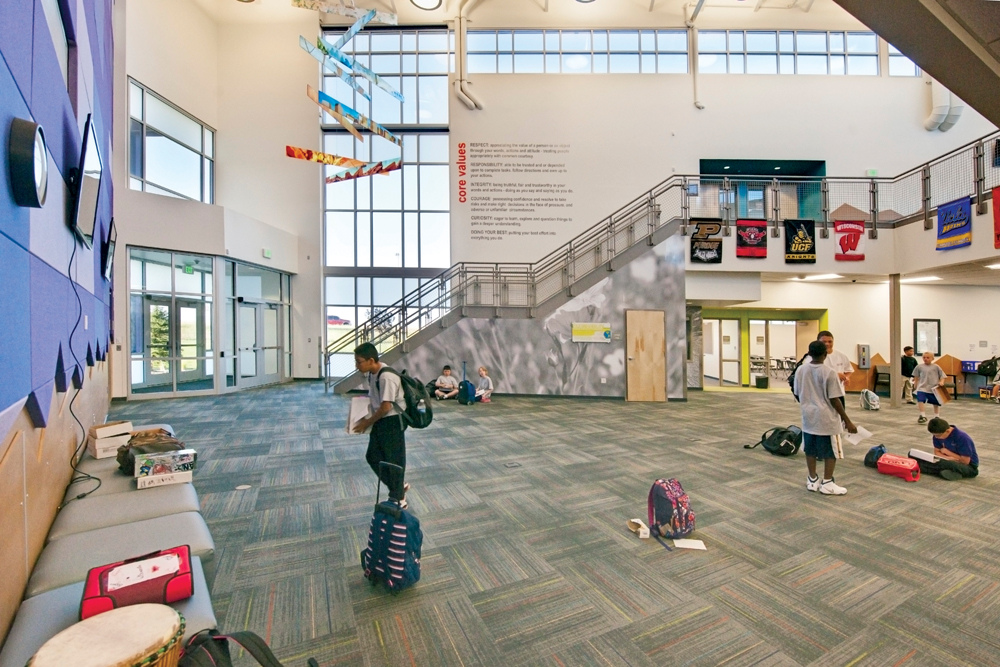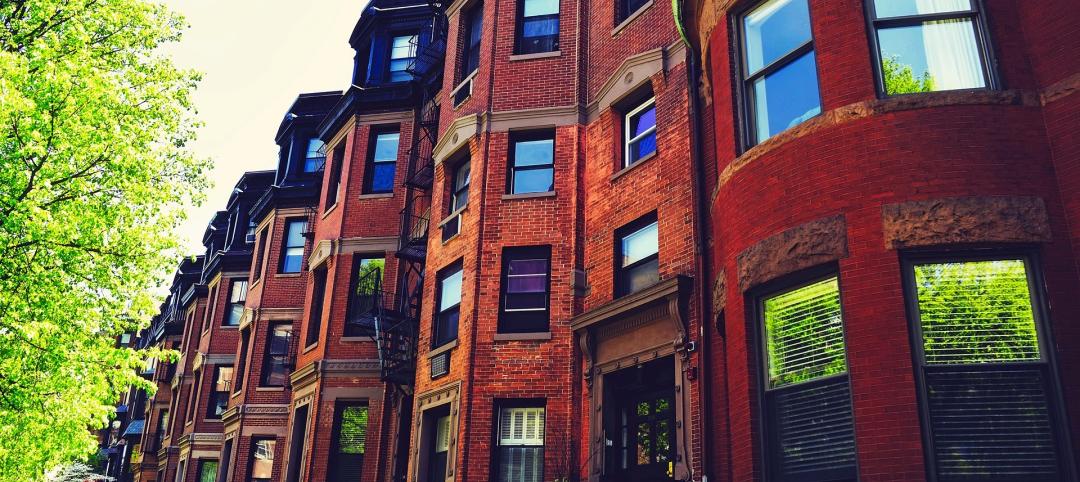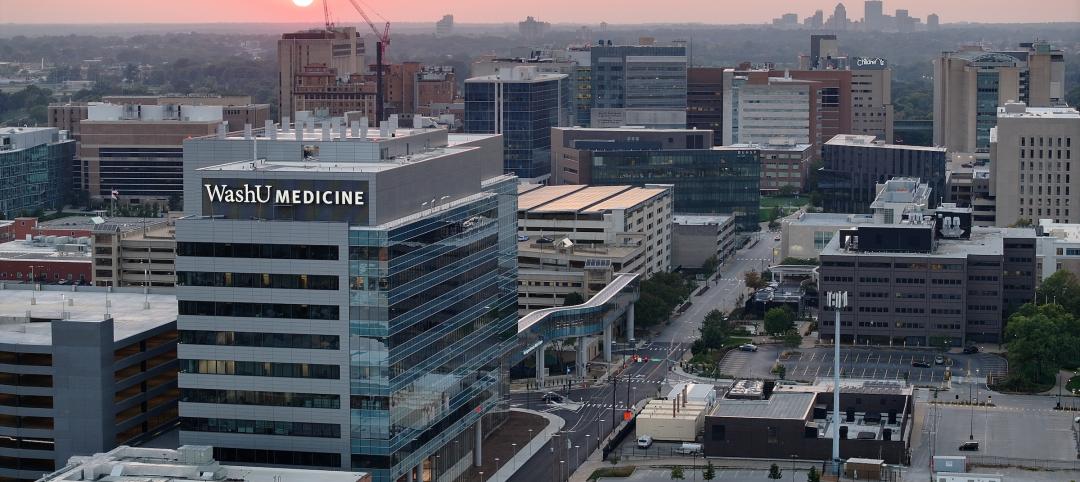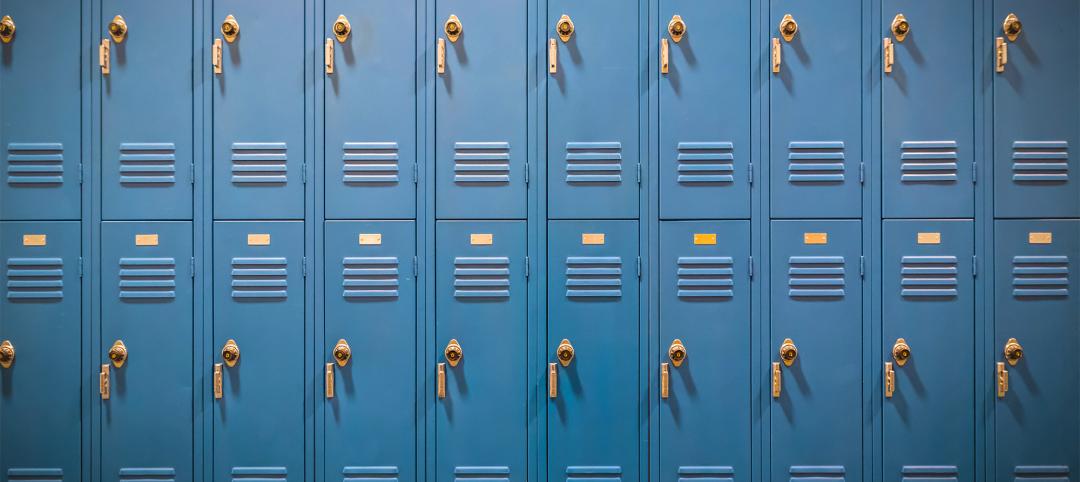As school construction budgets tighten, administrators and boards in the nation’s 13,000 public school districts are constantly on the lookout for hard evidence to justify the perceived—if not always actual—cost premiums associated with the decision to go green.
Help comes in the form of a study conducted by design firm DLR Group and the Institute for the Built Environment at Colorado State University, “Linking Performance & Experience: An Analysis of Green Schools.”
The research team started with the U.S. Green Building Council’s definition of a green school: “a school that creates a healthy environment that is conducive to learning while saving energy, resources, and money.”
Measuring energy use, resources, and money is fairly straightforward. Measuring student health and performance is another story. Aggregated test scores, absentee statistics, and graduation rates are all essentially public information, but jumping the legal and administrative hurdles of gathering data on student health and “soft” performance factors like “behavior” can be daunting.
“Everybody wants this hard data research, but we’re dealing with public school systems and there are privacy issues,” not to mention the cost of gathering such data, says Andy Ernsting, a Principal at DLR.
CREATING THE RESEARCH METHODOLOGY
In the DLR/IBE study, the researchers surveyed building occupants at 10 sites with a total of 12 green schools, completing interviews with facility managers on all 10 campuses. Fifty-three teachers, staff, and administrators from these schools completed an online questionnaire that asked how they perceived the impacts of sustainable design on student performance.
The results were overwhelmingly positive: 71% of respondents said they saw a positive effect on student achievement, 87% reported a positive impact on student health, 71% perceived a positive effect on student behavior, and 85% said they saw evidence of personal improvements in health and productivity.
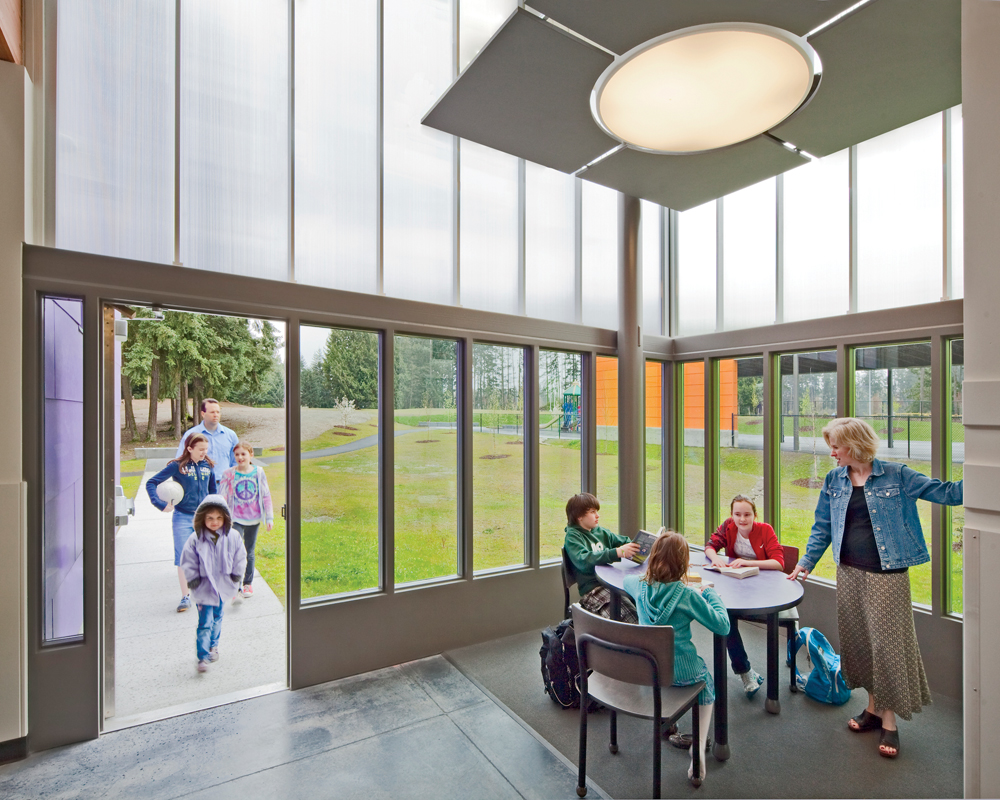
The design of Panther Lake Elementary School in Federal Way, Wash., uses daylighting and transparency to connect the building to the surrounding wetlands, forests, and fields. The 45,000-sf replacement school meets Washington Sustainable Schools Program requirements, the first of four such schools for Federal Way School District No. 210. DLR Group provided architecture, engineering, and planning services. The Building Team also included: Swenson Say Faget (SE), OTAK (CE and survey), Karen Kiest Landscape Architects, BRC Acoustics, JLR Design Group (food service consultant), and Babbit Neuman Construction Company (contractor). Photo: courtesy DLR Group
“I believe that a bright and comfortable work environment is healthier and makes people (adults and students alike) want to work more efficiently,” said one respondent.
“Sometimes perception is reality, and if people believe they’re in a higher-quality environment, they just perform better,” says Jim French, DLR Group Senior Principal and K-12 Education Studio National Leader. “I think some subjectivity of higher quality of comfort is not a bad thing.”
HOT TO IDENTIFY STUDENT PERFORMANCE IMPROVEMENTS
Brian Dunbar, the IBE’s Executive Director and Professor Emeritus at Colorado State, says that it may be possible to draw a more direct correlation between the sustainable characteristics of a school’s architecture and better student performance. ”We’re coming to the place of saying, OK, the test scores are better here, let’s look at why.”
Dunbar says the definition of a healthy school starts with indoor environmental quality. Healthy air, light quality (both daylight and electrical), thermal comfort, and acoustics are all elements of a healthy school, he says.
“With some of our recent research, we’ve shown that with good air quality and thermal comfort, kids are actually missing fewer days of school,” says DLR’s French. He says statistics of that kind can be powerful with school districts, even those that feel sustainable design comes with higher upfront costs. “If the research shows that students will stay in their seats because they’re not sick, that’s a big selling point,” he says.
Seventy-one percent of respondents saw evidence of an improvement in student behavior, notably less violence, vandalism, and bullying. While there is no hard evidence to prove the case, Dunbar believes environmental factors can have an effect on a student’s mood, which can impact behavior. “We’re talking about a calmer place, a cleaner, more organized space,” he says.
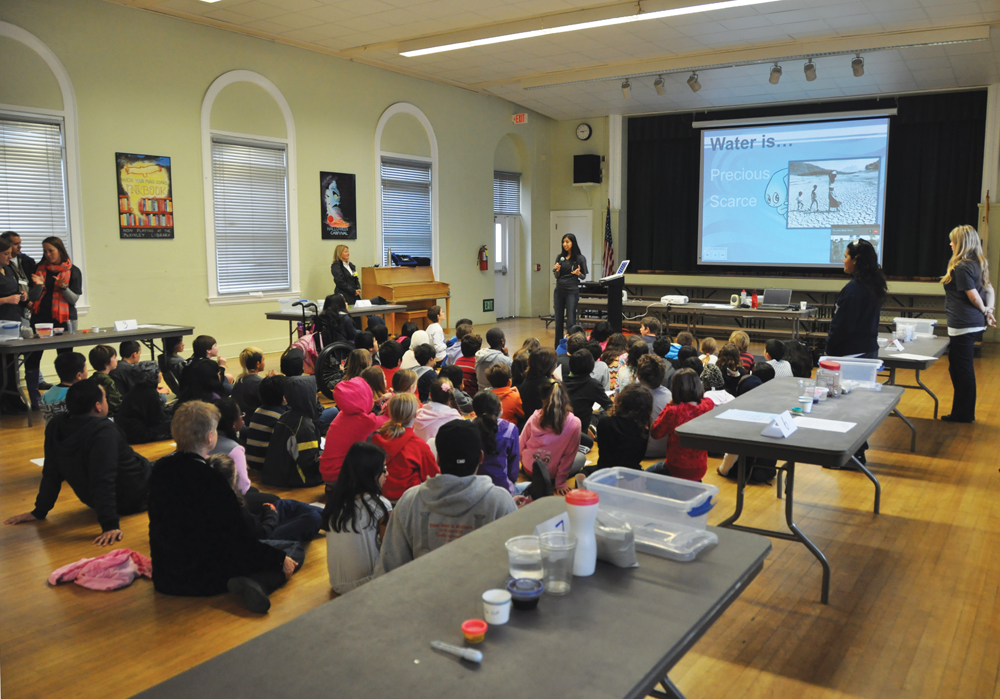
HMC Architects’ ArchLab has developed a program in coordination with Santa Monica–Malibu Unified School District and McKinley Elementary School to educate elementary school students about their role in sustainable living. The team also trained Santiago High School students on how to teach the lessons to elementary school students, and is publishing a children’s book based on the workshops. Photo: courtesy HMC Architects
French notes the importance of student involvement in the development of a green school, particularly for older students. “You’ve got to involve the students in the vision of the school,” he says. “They’ve got to believe they’re part of it.”
“The students are proud of their building, which has all but eliminated any school vandalism,” said one survey respondent. “There is a level of pride in being a student at Pioneer [a middle school in the study] and the students’ behavior is a reflection of that pride in their building.”
Students should also take part in the day-to-day operations of the school, from monitoring energy use via interactive screens, to food and waste recycling. “We call this ‘building as curriculum,’” says Ernsting. “Make the operation of the building part of the student experience.”
French believes administrators are becoming more open to the idea of green schools. “As districts become more sophisticated, green schools are going to be mandatory,” he says. “School districts aren’t getting any more money from the public, so it’s critical that green building costs not go up. We have a responsibility as architects, engineers, and contractors to figure out how to get these buildings done as inexpensively as we can.”
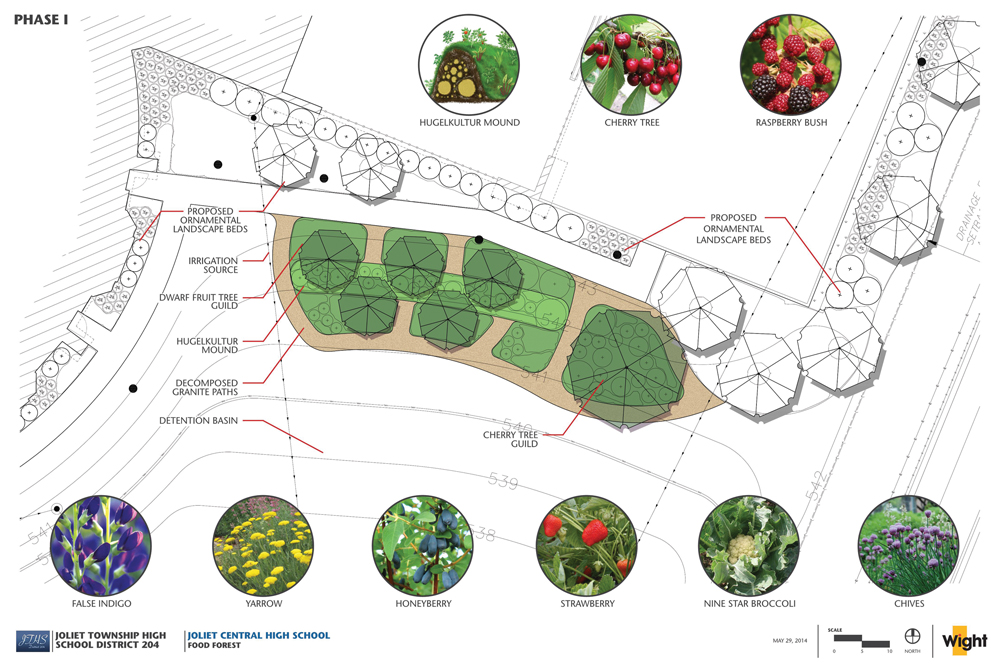
Wight & Company has proposed an “edible forest” on the campus of Joliet (Ill.) Central High School as part of a kitchen, cafeteria, and galleria addition currently under way. The proposed garden would use a form of permaculture based on a woodland ecosystem. If implemented, the sustainable ecosystem will include nitrogen fixers, insect repellents, and trees, shrubs, and ground covers to teach students about sustainable food production. Photo: Wight & Company
Related Stories
Office Buildings | Jun 3, 2024
Insights for working well in a hybrid world
GBBN Principal and Interior Designer Beth Latto, NCIDQ, LEED AP, ID+C, WELL AP, share a few takeaways, insights, and lessons learned from a recent Post Occupancy Evaluation of the firm's Cincinnati, Ohio, office.
Multifamily Housing | Jun 3, 2024
Grassroots groups becoming a force in housing advocacy
A growing movement of grassroots organizing to support new housing construction is having an impact in city halls across the country. Fed up with high housing costs and the commonly hostile reception to new housing proposals, advocacy groups have sprung up in many communities to attend public meetings to speak in support of developments.
MFPRO+ News | Jun 3, 2024
New York’s office to residential conversion program draws interest from 64 owners
New York City’s Office Conversion Accelerator Program has been contacted by the owners of 64 commercial buildings interested in converting their properties to residential use.
MFPRO+ News | Jun 3, 2024
Seattle mayor wants to scale back energy code to spur more housing construction
Seattle’s mayor recently proposed that the city scale back a scheduled revamping of its building energy code to help boost housing production. The proposal would halt an update to the city’s multifamily and commercial building energy code that is scheduled to take effect later this year.
Mass Timber | May 31, 2024
Mass timber a big part of Western Washington University’s net-zero ambitions
Western Washington University, in Bellingham, Wash., 90 miles from Seattle, is in the process of expanding its ABET-accredited programs for electrical engineering, computer engineering and science, and energy science. As part of that process, the university is building Kaiser Borsari Hall, the 54,000-sf new home for those academic disciplines that will include teaching labs, research labs, classrooms, collaborative spaces, and administrative offices.
Construction Costs | May 31, 2024
Despite challenges, 2024 construction material prices continue to stabilize
Gordian’s Q2 2024 Quarterly Construction Cost Insights Report indicates that supply chain issues notwithstanding, many commodities are exhibiting price normalization.
University Buildings | May 30, 2024
Washington University School of Medicine opens one of the world’s largest neuroscience research buildings
In St. Louis’ Cortex Innovation District, Washington University School of Medicine recently opened its new Jeffrey T. Fort Neuroscience Research Building. Designed by CannonDesign and Perkins&Will, the 11-story, 609,000-sf facility is one of the largest neuroscience buildings in the world.
Architects | May 30, 2024
AE firm Goodwyn Mills Cawood merges with Southland Engineering
Architecture and engineering firm Goodwyn Mills Cawood (GMC) is further expanding its services through a strategic merger with engineering firm Southland Engineering in Cartersville, Ga.
K-12 Schools | May 30, 2024
Inclusive design strategies to transform learning spaces
Students with disabilities and those experiencing mental health and behavioral conditions represent a group of the most vulnerable students at risk for failing to connect educationally and socially. Educators and school districts are struggling to accommodate all of these nuanced and, at times, overlapping conditions.
MFPRO+ New Projects | May 29, 2024
Two San Francisco multifamily high rises install onsite water recycling systems
Two high-rise apartment buildings in San Francisco have installed onsite water recycling systems that will reuse a total of 3.9 million gallons of wastewater annually. The recycled water will be used for toilet flushing, cooling towers, and landscape irrigation to significantly reduce water usage in both buildings.


